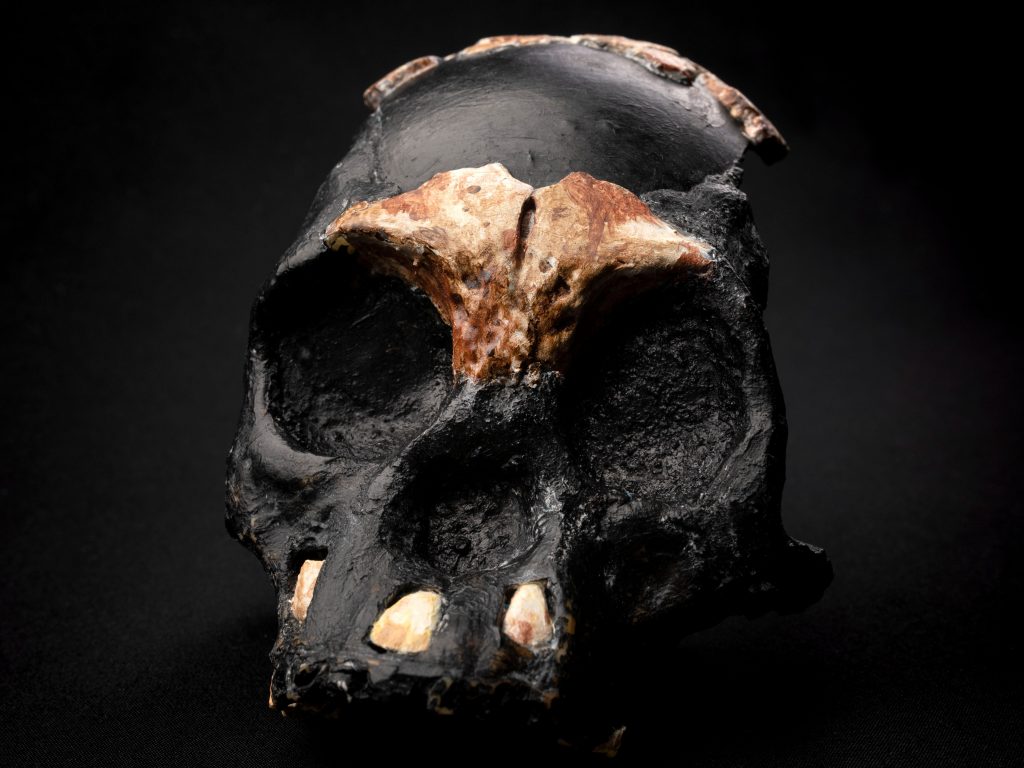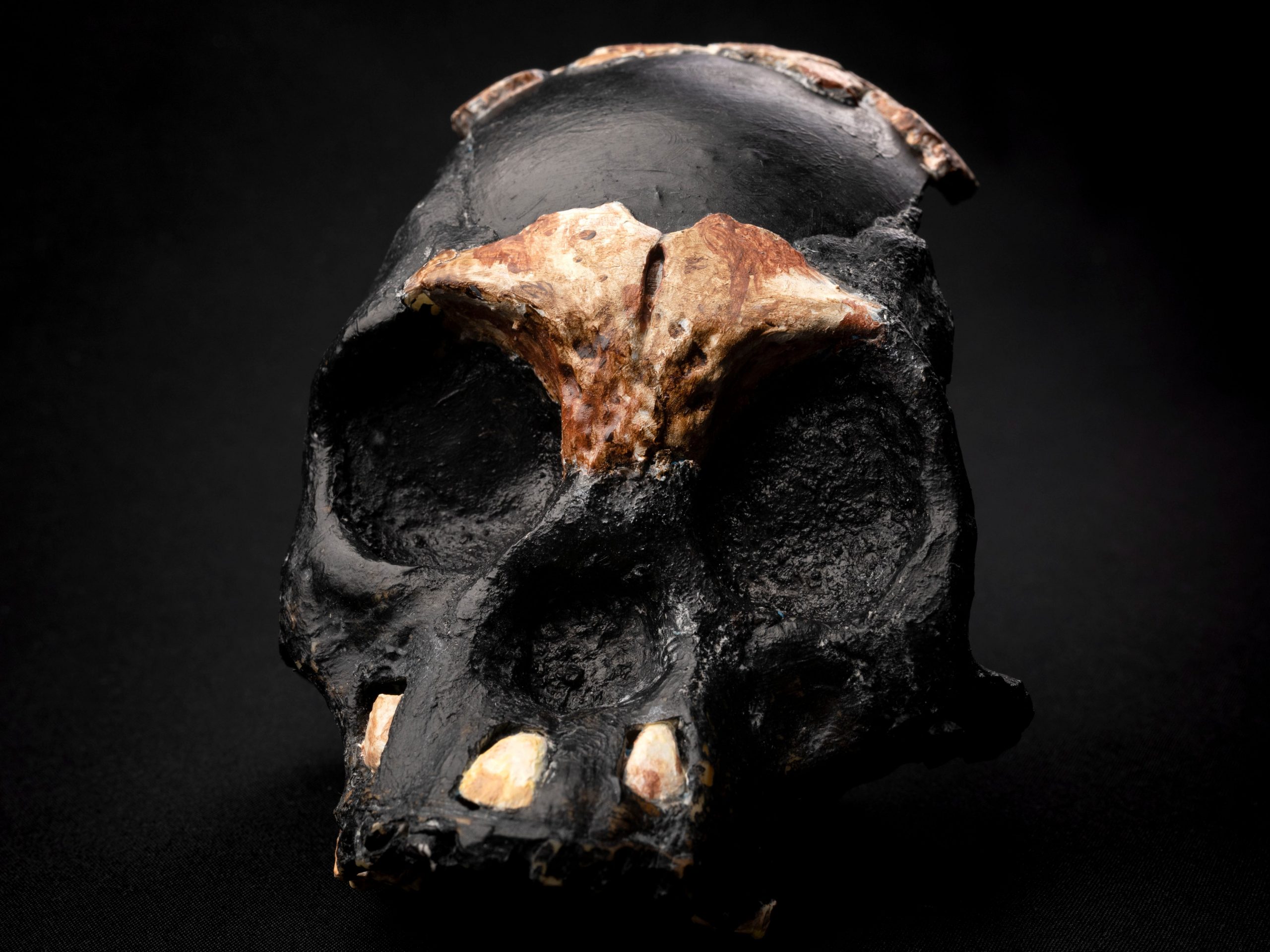
Wits University
- A human ancestor called Homo naledi lived in southern Africa between about 241,000 and 335,000 years ago.
- Anthropologists found the first skull belonging to a Homo naledi child deep in a cave.
- The skull's remote location suggests these ancestors ritually buried their dead, new research says.
Anthropologists Marina Elliott and Becca Peixotto found themselves squeezing through a tight tunnel four years ago, nearly 300 feet underground. They were searching for ancient human remains in a network of caves near Johannesburg, South Africa.
With only headlamps to guide them through the cave system, called Rising Star, the duo scrambled over boulders until they came upon a narrow shaft. Only one could enter the shaft at a time, so Peixotto pretzeled her body around the corner.
There she saw them, on a limestone shelf: teeth and fragments of skull belonging to a Homo naledi child.
Homo naledi is a mysterious human ancestor that lived about 250,000 years ago. Peixotto, a researcher at American University, has helped discover bones from two dozen naledi individuals in the Rising Star caves over the last eight years.
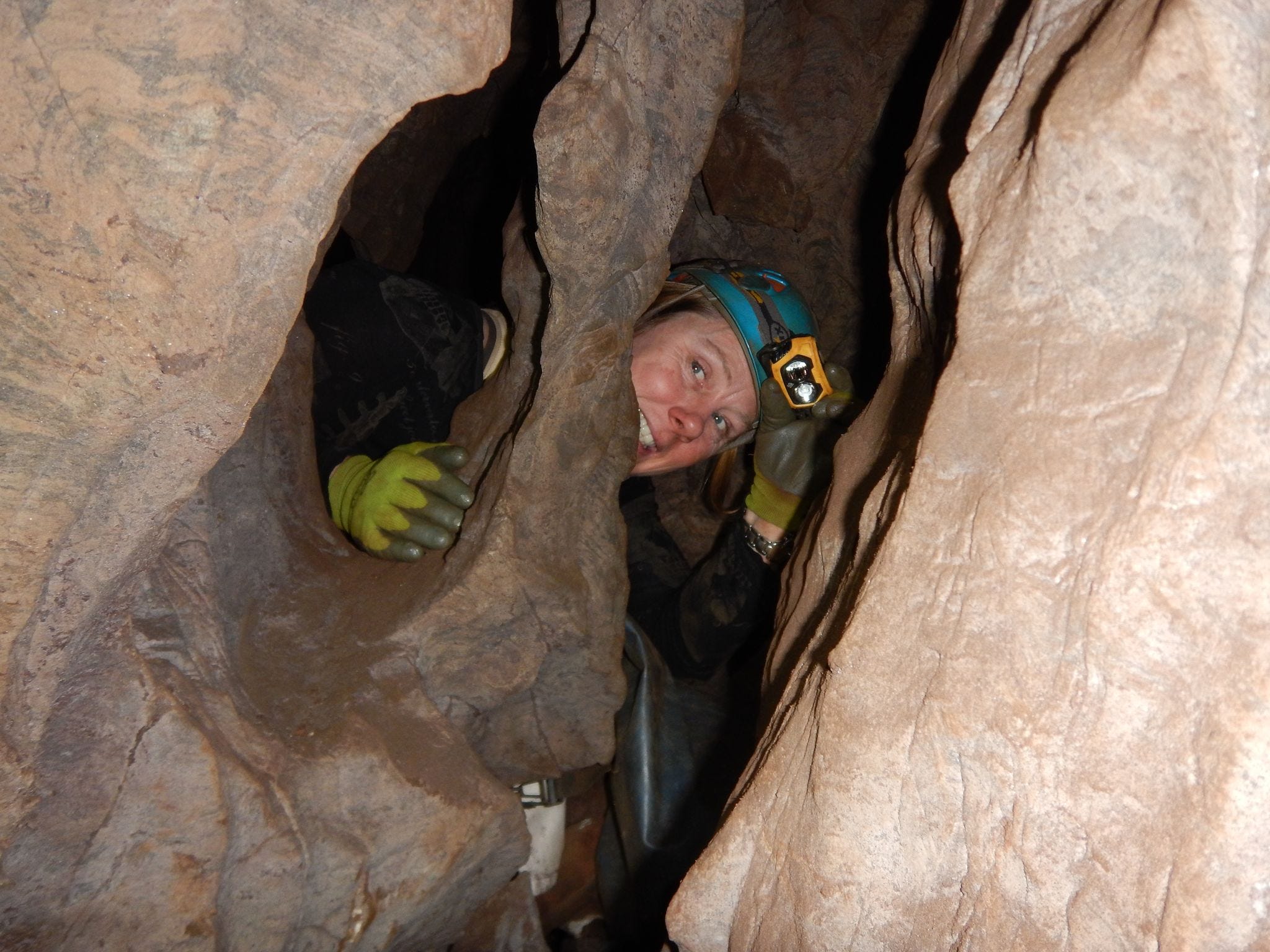
Wits University
Those other remains were located in a chamber near the newly found skull, but this recent discovery is unprecedented, since it's the first infant naledi fossil ever found, according to a pair of studies published Thursday. One of those studies, co-authored by Elliott, Peixotto, and 17 other researchers, details the exploration of the Rising Star system. A second paper describes the skull.
Lee Berger, a paleoanthropologist at the University of Witwatersrand who co-authored both studies, said the skull could teach experts about the growth and development of this species, which likely lived alongside modern humans.
The remote location of the finding, too, offers clues into how naledi handled their dead.
The child's body was likely brought into the cave tunnel by members of its own species, Berger said in a video about the discovery. That means the child may have been ritually buried - a behavior typically seen in more advanced human ancestors, like Neanderthals and the earliest Homo sapiens.
Anthropologists named the child 'the lost one'

Wits University
The researchers named the child "Leti," after the word "letimela" in the local Setswana language, meaning "the lost one."
All told, they found six teeth and 28 skull fragments in 2017, which were used to reconstruct Leti's skull over the last four years.
Since the team didn't find any other body parts nearby, they couldn't determine whether Leti was male or female. Children's bones are more breakable than those of adults, and their skulls are thinner, so they don't preserve as well.
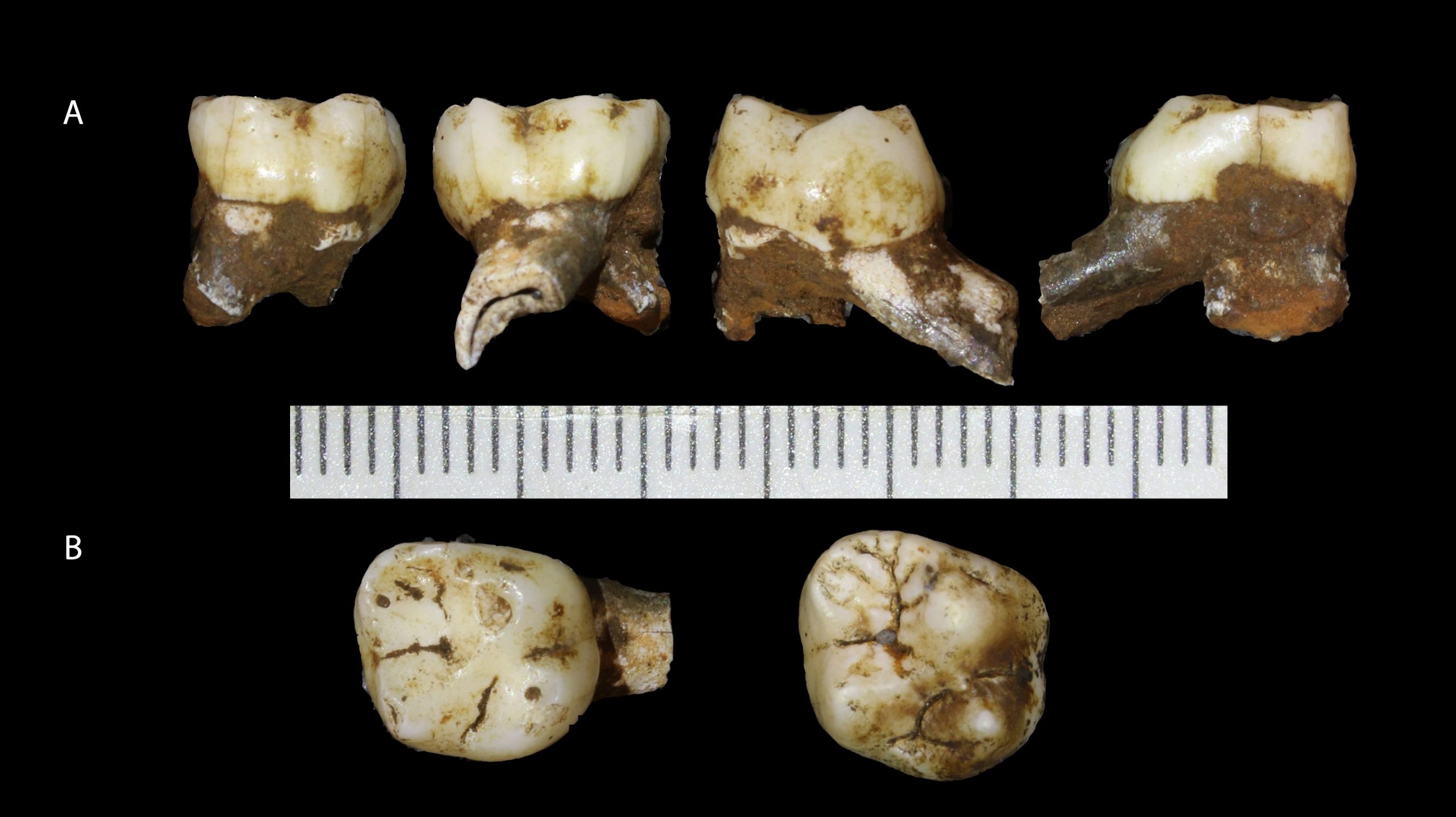
Wits University
But Berger's team estimated Leti's age to be between four and six years old using its teeth, since teeth grow at a standard rate. So the researchers compared the size of Leti's teeth to those of young humans.
They also determined that Leti had a similar brain size to other members of its species: up to 610 cubic centimeters, or about one-third of a modern human's brain size.
"This would have been around 90% to 95% of its adult brain capacity," Debra Bolter, co-author of the skull study, said in a press release.

Wits University
So far, the researchers haven't been able to determine precisely when Leti died.
Berger estimated it was about a quarter-of-a-million years ago, since the remains of the adult naledi found in the cave system are between 241,000 and 335,000 years old.
An 'upset parent' may have placed Leti in its final resting place
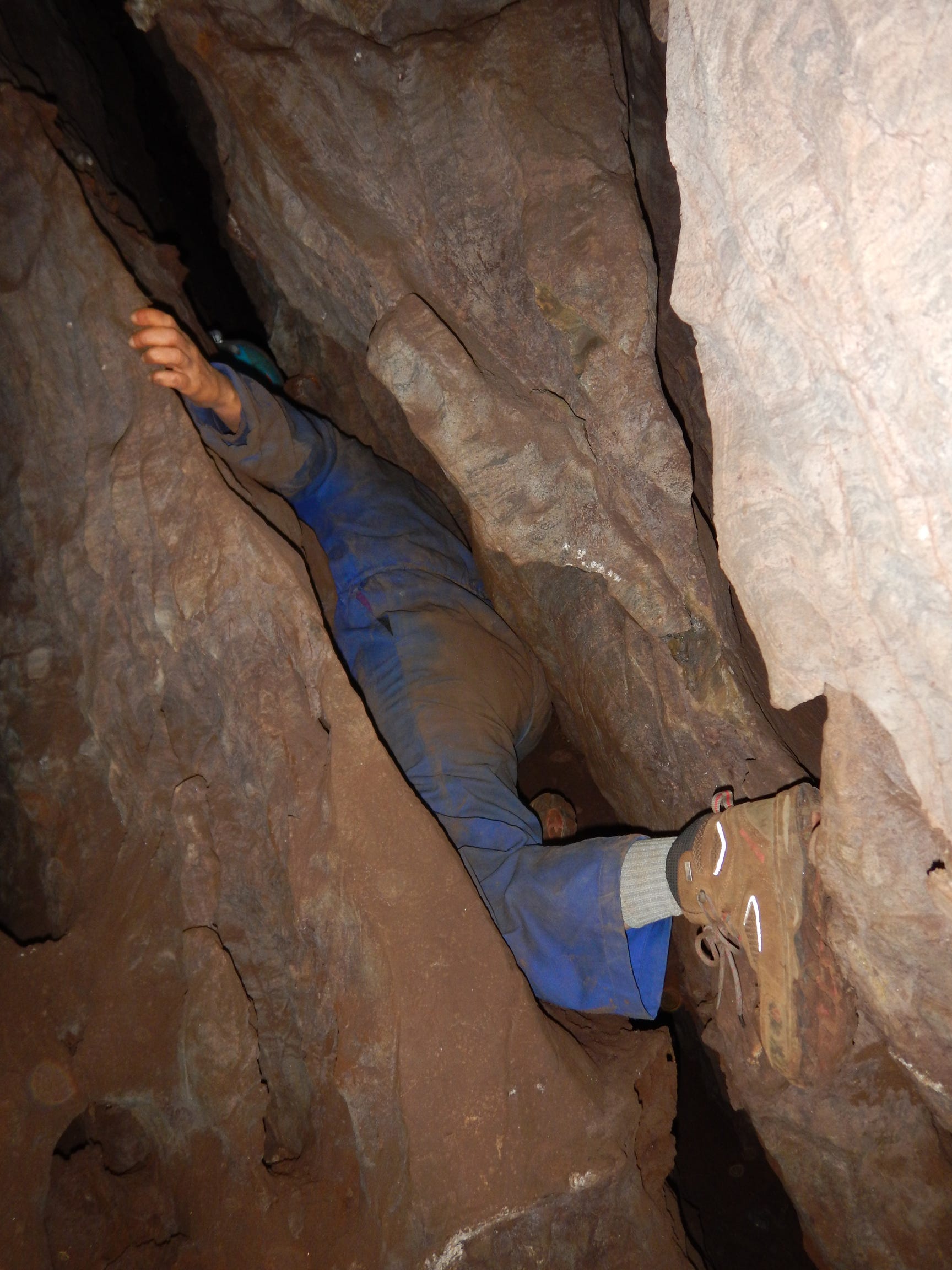
Wits University
There's potential for plenty more discoveries in the Rising Star's underground rivers and passages.
Leti was found just 40 feet away from another remote chamber, Dinaledi, where Elliott, Peixotto, Berger, and others discovered the first naledi fossil in 2013. The difficulty of accessing Dinaledi, let alone Leti's resting place, suggests the child's remains may have been deliberately placed or buried there.
"It's easy to imagine you might have some upset parent that would want to place this young individual into its final resting place," Juliet Brophy, who also co-authored the skull study, said in the video.
Leti's skull also shows no signs of damage, suggesting the body stayed safe from scavengers.
Berger said his team will continue to look for more naledi fossils in the Rising Star cave system. Eventually, he said, they hope to confirm whether these remote passages served as a burial ground for this mysterious human ancestor.
